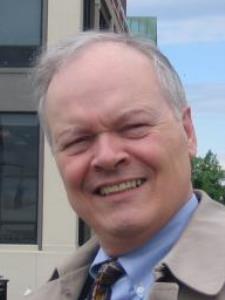
Mitasvil P. answered • 07/31/13
Math,Test Prep (SAT,GRE,ACT,SSAT)-Expert Tutoring at one go
Let variable r be the radius of the circular base and variable h the height of the cylinder.
The total surface area of the cylinder is given to be
3*pi = (area of base) + (area of the curved side)
= pi*r^2 + (2*p*r)h ,
so that
2*pi*r*h = 3*pi - pi*r^2
or
h = { (3*pi – pi*r^2 )/2*pi*r }
= { 3 /2*r } - (1/2) r .
We wish to MAXIMIZE the total VOLUME of the cylinder
V = (area of base) (height) = pi*r^2*h .
However, before we differentiate the right-hand side, we will write it as a function of r only. Substitute for h getting
V = pi*r^2*h
= pi*r^2( { 3/2*r } - (1/2) r)
= (3/2)*pi*r - (1/2)pi*r^3 .
Now differentiate this equation, getting
V' = (3/2)pi - (1/2)pi*3*r^2
= (3/2)pi( 1 - r^2 )
= (3/2)pi( 1 - r ) ( 1 + r )
= 0
for
r=1 or r=-1 .
But r =/ -1 since variable r measures a distance and r > 0 . Since the base of the box is a circle and there are 3*pi ft^2 of material, it follows that 0 <r<= sqrt{ 3 } . See the adjoining sign chart for V' .
If
r=1 ft. and h=1 ft. ,
then
V = pi ft^3
is the largest possible volume of the cylinder.





